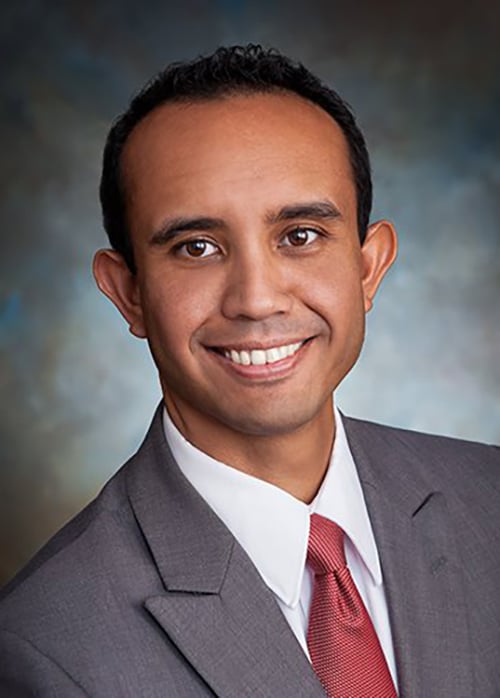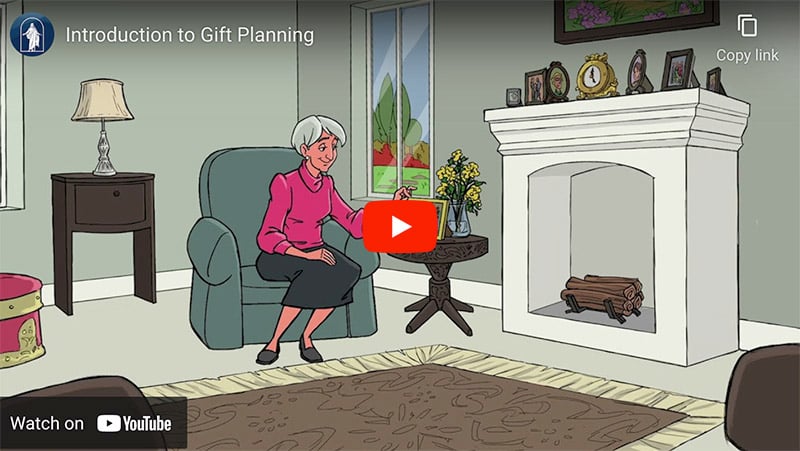
Fall 2022 GPC Newsletter
Manager's Minute
New Beginnings
By Trace Eddington

I know that typically you will receive this newsletter and be greeted by a message from either David Bonner, the manager of the Philanthropies Gift Planning Services team, or one of his capable colleagues that most of you have had interactions with. But this month you are hearing from me and probably wondering “Who is this guy?” So, allow me a moment to introduce myself.
My name is Trace Eddington and I am the current Director of Relationship Development at Philanthropies. I have four teams that I am privileged to work with and serve. Those teams are Annual Giving, Leadership Giving, Prospect Development, and the Gift Planning Services team that each of you are familiar with. It is my opportunity to work closely with David Bonner and his team as we strive to serve each of you and the generous donors that you work with.
I began my time in this role when Wes Mashburn, who most of you know well, moved from this position at Philanthropies to Deseret Trust Company, where he serves as the President and CEO currently. Prior to this, I was the Senior Manager of Marketing and Communications at Philanthropies. In that role, I was able to work closely with the GPS team and the Gift Planning Council Conference in providing communication materials in support of their efforts. My background is in communication and organizational leadership with a BA in Journalism from Brigham Young University and an MA in Communication and Leadership Studies at Gonzaga.
My wife Amy and I have four children between the ages of 21 and 28 with two wonderful grandsons. As we approach our 30th wedding anniversary, we are excited to be empty-nesters. In my spare time I enjoy spending time with family and friends at our small cabin in the mountains of southern Utah and working as the PA announcer for BYU football at LaVell Edwards Stadium and BYU men’s basketball at the Marriott Center.
Now that you know a bit more about me, I look forward to meeting and learning a bit more about each of you at upcoming Gift Planning Council events. I’m so impressed with the dedication of those of you that I have met and am grateful to partner with others who have the privilege of working with consecrated individuals that are looking for ways to bless others through philanthropy.
Part of the joy I find in this work is also from my association with the talented individuals on the Gift Planning Services team. David Bonner, Jerry Reynolds, Carl McLelland, Ed Knight, Jenny Wilson, and David Smith are dedicated and talented professionals that have the technical expertise and industry experience to assist you as you work with clients that are interested in giving to the Church of Jesus Christ of Latter-day Saints and it’s approved fundraising priorities. I know that your interactions with them will be as rewarding as mine have been. They are wonderful!
Thank you for all that you do to make the Gift Planning Council one of the finest professional organizations that I have been associated with.
The Big Bad Clawback—Does it Have Any Teeth?
By David Sloan

In the fable “The Three Little Pigs,” the Big Bad Wolf blows down the straw and stick houses built by two of the pigs, but is unable to blow down the brick house of the third pig. Similarly, in recent years, estate planners have worried about the threat of the “Big Bad Clawback,” simultaneously wondering if the “Clawback” really has any teeth and contemplating which strategies could survive such a challenge if it does. As discussed below, the clawback issue arises because of the possibility that a large gift covered by the significantly increased lifetime exemption available under the 2017 Tax Cuts and Jobs Act (the “2017 Act”) will be “clawed back” and subject to the estate tax if the donor dies after the law sunsets on January 1, 2026.
To begin with, § 2001 of the Internal Revenue Code imposes the federal estate tax. In general, it does so by first calculating a “tentative” estate tax to be imposed on the sum of the taxable estate and the adjusted taxable gifts (“ATG”) made during the decedent’s life. In other words, the tentative tax is calculated based on essentially everything the decedent has ever gratuitously transferred, whether during life or at death. From this tentative estate tax is subtracted a hypothetical gift tax (the “HGT”) that is equal to the gift tax that “would have been payable” if certain modifications had been made. The result of this equation is the net tentative estate tax (“NTET”) imposed by § 2001. In this alternate universe, a larger HGT is desirable because its subtraction will result in a smaller NTET. However, the actual estate tax is determined by applying the applicable credit amount (“ACA”) from § 2010 “against the tax imposed by § 2001.”
The ACA is based on the applicable exclusion amount, which consists of the basic exclusion amount (the “BEA”) and the deceased spousal unused exclusion amount (the “DSUE Amount”). The 2017 Act basically doubled the BEA through 2025 (as indexed for inflation). However, when the law sunsets in 2026, the BEA will essentially be cut in half (a similar sunset was scheduled for January 1, 2013 but did not occur). For decedents who make large gifts covered by the increased BEA and then die after the sunset, the ACA available to cover the NTET could be insufficient to cover those large gifts. In other words, the unusual methodology of §§ 2001 and 2010 could result in an estate tax of up to $2 million or more for gifts that were actually covered by lifetime exemption when made. In its simplest form, this is the Clawback. (Read more)
Ensign College Spotlight

Ensign College provides a market-driven, skills-based education with associate and bachelor’s degrees offered in fields where employment demand is high and entry-level earning potential is excellent.
Current fundraising priorities at Ensign College include scholarships focused on needs-based student aid as well as scholarships for students who demonstrate leadership and service. Student aid scholarships support internships, leadership, missionary service, international students, and PathwayConnect graduates. (Learn more)
Informational Videos
We have created numerous informational videos that can be used easily to introduce and even educate individuals about segments of gift planning. They are easily available in the Gift Planning section of the Philanthropies website. One example is the following:
Introduction to Gift Planning
Are you wondering why you should learn more about estate planning, family philanthropy, or donating to The Church of Jesus Christ of Latter-day Saints and its affiliated institutions? This video will introduce you to the wonderful options available.
Ed Knight Spotlight

One of the new members of our Gift Planning team is Ed Knight. We are very excited for you to get to know him a little better in this edition of the GPS Spotlight!
Ed Knight and his wife, Lisa, met each other at BYU as students in 1997 and married in 1998. They are excited to be living in Provo again—now with their seven children.
Ed joined us after working as an estate attorney and nonprofit leader in the Phoenix area. In the past, he has also been licensed as an investment advisor and worked as an auditor. His charitable work has included roles with the Arizona Community Foundation, A New Leaf and House of Refuge, along with several board and committee memberships with other nonprofits.
Ed earned a law degree from Arizona State University’s Sandra Day O’Connor College of Law (2006) and earned Bachelor’s and Master’s degrees in Accountancy from Brigham Young University (2001). Ed enjoys watching and playing sports (especially soccer) with his kids, making new friends, and reading.
Join the Gift Planning Council LinkedIn group at this link.
Contact Us
For a detailed discussion of the services we provide you and your advisors, please contact us at 1-877-650-5377 or by email.
